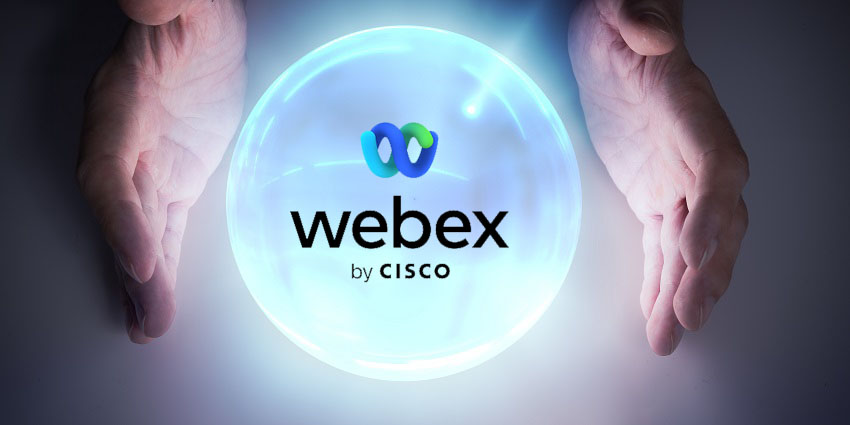In 2022, collaboration environments gained ground, CPaaS garnered more hype, and murmurings of the metaverse grew stronger.
Next year, these trends will likely continue. Yet, others may also enter the fray as CX technology advances, hybrid environments mature, and economic uncertainty looms.
Against this backdrop, here are five customer experience predictions for 2023, put forward by Zack Taylor, Director of Strategic Communications at Cisco Contact Center BU.
1. Observable AI Matures
AI fuels many customer experiences. Yet, it is often under the hood, routing customers, supporting data flows, and streamlining business processes.
While exciting, Observable AI is far less common – with use cases including biometrics, augmented reality, and insights generation.
However, one example making headway in the CX space is conversational AI, as Taylor predicts:
Intelligent virtual agents will take another chunk off the human strain in the contact center – supporting both customers and reps.
Gartner research shares this sentiment, suggesting that AI will automate ten percent of contact center conversations by 2026. Currently, it only handles 1.6 percent.
Yet, reservations circling conversational AI persist. Indeed, continued deployment complexity and a fragmented vendor landscape may stunt this rapid growth.
Luckily, more innovative vendors – including Webex – are making great strides in increasing the accessibility of the technology. Indeed, it offers a hub of bot-building apps, making best-of-breed technologies available to Webex Contact Center customers.
Also, it delivers many simplified use cases, such as voicebots that collect customer information in call queues, which relate to their intent. Such information streamlines the subsequent customer-agent conversation and may offer an excellent first step into the world of observable AI.
2. Proactive Customer Support Advances
“Similar to conversational AI, proactive customer support is rising in prominence as contact centers look to negate the service needs of customers,” says Taylor.
Unfortunately, these strategies are often ill-conceived. Indeed, two-thirds of customers have escalated to the contact center after receiving a proactive alert – according to 2022 Gartner research.
Why? Often, it is to confirm that the message is not spam, ask for further information, or confirmation. Consequently, even more calls flood through human-assisted channels.
One method to circumvent this issue is to prioritize proactive communication for urgent issues.
Yet, more innovative companies are building more intelligent proactive communications with CPaaS tools, such as Webex Connect.
Discussing how this could work in conversation with prominent industry analyst Zeus Kerravala, Jay Patel, VP and General Manger of Webex CPaaS, stated:
The ability exists to proactively anticipate what customers need most, put some analytics around it, and then proactively communicate with customers. These tools enable that.
Such approaches may catch fire in contact centers as many brands must rethink their proactive customer support strategies. Otherwise, they will continue to increase customer confusion.
3. New Channels Come to the Fore
Messaging apps offer much potential for businesses. Just consider how Chinese consumers use WeChat. The channel is already the most prominent networking, mobile payment, and shopping platform in the country – perhaps providing a glimpse into the future of Messenger and WhatsApp.
Moreover, some even predict that these apps will morph into browsers and, over time, will challenge Google and various other search engines.
Will this happen in 2023? No, but businesses may prepare for the future of consumer messaging and consider integrations with messaging apps. After all, as Taylor says:
We are becoming a society that thinks and expresses itself through typing into smartphones. Therefore, building new, convenient, and continuous experiences across these devices becomes critical.
In line with today’s smartphone-obsessed society, some may consider building social commerce journeys through social media platforms such as Facebook, TikTok, and Instagram. These may support end-to-end customer journeys, from product discovery to post-sale purchasing.
Finally, many more brands may consider the potential of the metaverse and all its opportunities, from virtual storefronts to AI-powered digital store associates.
While the channel is in its infancy, Mark Zuckerberg’s $10BN investment and Gartner’s prediction that 25 percent of people will spend at least one hour per day in the metaverse by 2026 have created much hype. In 2023, this hype may capture the attention of more CX innovators.
4. Businesses Set Hybrid Strategies in Stone
Hybrid working is “messy and exhausting” for many, according to an article in The Washington Post that dates back to April 2022.
Indeed, the transition proved jarring, inconvenient, and – in some cases – pointless. Moreover, once the pandemic-driven sense of togetherness withered, many agents felt detached from contact center decision-makers: voiceless.
Noticing this problematic pattern, many contact centers reacted fast, eager to avoid attrition and safeguard wellbeing. As such, experimentation became the name of the game, listening to agent feedback and working with them to devise new engagement plans. As Taylor says:
Many contact centers have now worked with their agents to understand their tool, schedule, and engagement preferences, In doing that, they made a concerted effort to showcase their endeavors to improve agent experiences.
With this enhanced knowledge, many forward-thinking operations will assess which experiments worked well and create routines to recreate positive results.
These will likely include structured check-ins, social interaction opportunities, and ongoing encouragement and emotional support. Weaving these into a set-in-stone plan – which incorporates agent input – is likely best practice.
5. UCaaS-CCaaS Integrations Become the Norm
Currently the exception, *UCaaS-CCaaS integrations will soon become the norm. Why? Because they enable operations to spread customer insights across the enterprise, increase collaboration, and facilitate a fun, positive culture.
Furthermore, businesses aim to integrate technologies to simplify the tech stack and business processes. As Taylor says:
People have realized the value chain of a business should be much more cohesive, so why shouldn’t the technology that supports that be more aligned, integrated, and organized?
In addition, a UCaaS-CCaaS integration increases ease of purchase. After all, it is much easier for many companies – particularly in the SMB space – to buy a single product from a lone vendor.
As this trend grows, offerings like the Webex Contact Center come to the fore, with in-built UC capabilities – taking enterprise collaboration and integration to the next level.
Also, it includes native CPaaS features, allowing operations to build more innovative contact center journeys, which help to differentiate service experiences.
For more information on this subject, visit this page.
Build Better Experiences with Webex
Webex is building a future of customer experience that is smart, proactive, and hyper-personalized.
As such, it has launched a CX portfolio that unities CCaaS, UCaaS, and CPaaS technologies to streamline operations, simplify service, and enhance customer experiences.
To discover more about the portfolio and its vision for the future of CX, visit: https://www.webex.com/products/customer-experience.html







